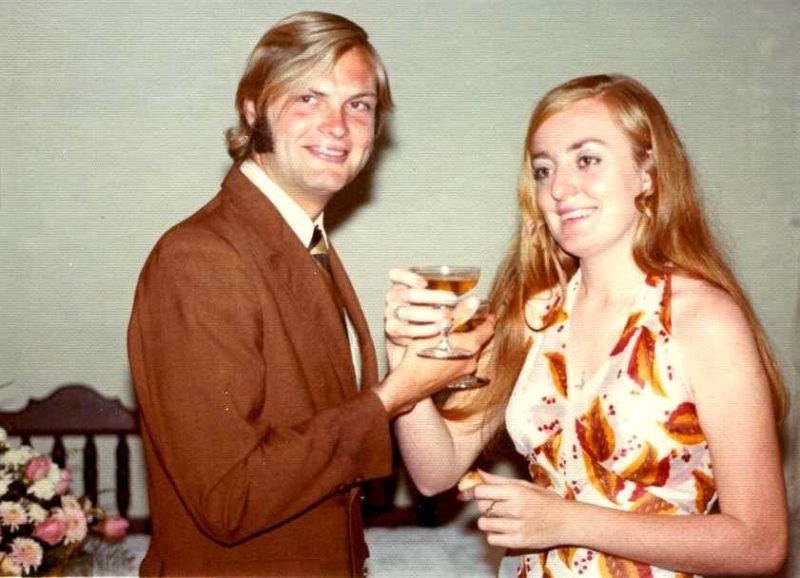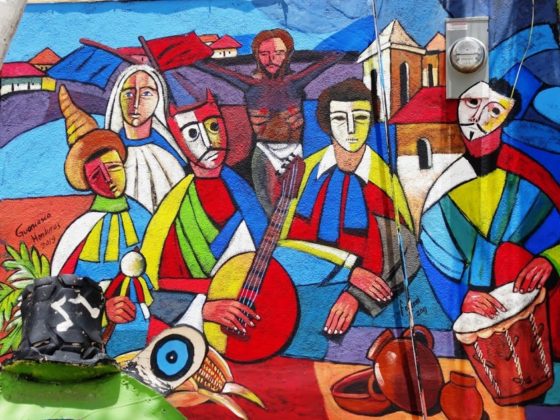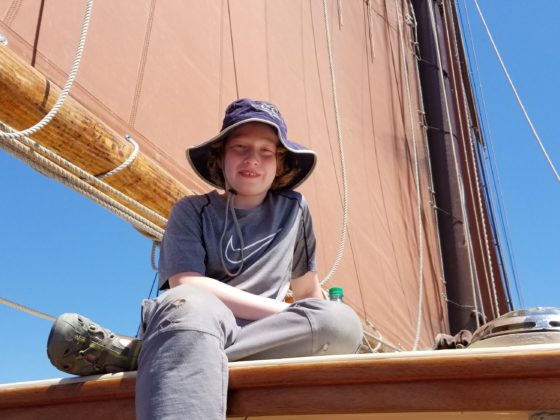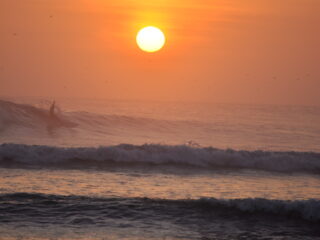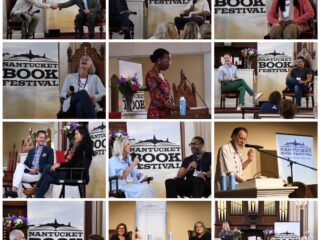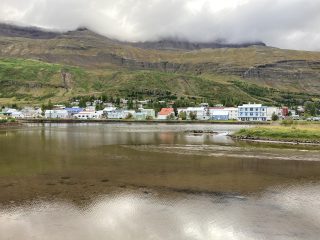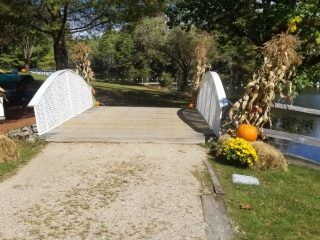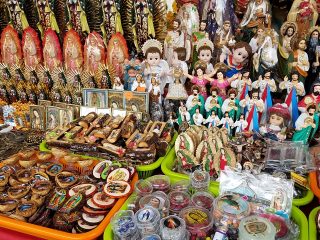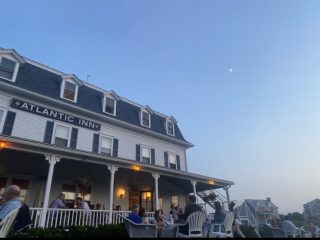Share our similarities, celebrate our differences.
― M. Scott Peck
“Travel is like love, mostly because it’s a heightened state of awareness, in which we are mindful, receptive, undimmed by familiarity and ready to be transformed. That is why the best trips, like the best love affairs, never really end.” — Pico Iyer
First, off we headed up the Pan-American Highway to Huehuetenango in the highlands of Guatemala, and then over some very sketchy mountain roads (darling, you don’t need to look out over the side of the road on my side….), over the Cuchumatanes into Mexico and, after seven or eight hours, into San Cristobel de las Casas, which is a historic colonial town filled with Mayan Indians, and which, according to Ligia, really should be part of Guatemala. The next day we drove up to what would become my favorite ruins, Palenque, which has the distinctive of a tower shaped like an observatory; the Mayans did pay attention to the stars.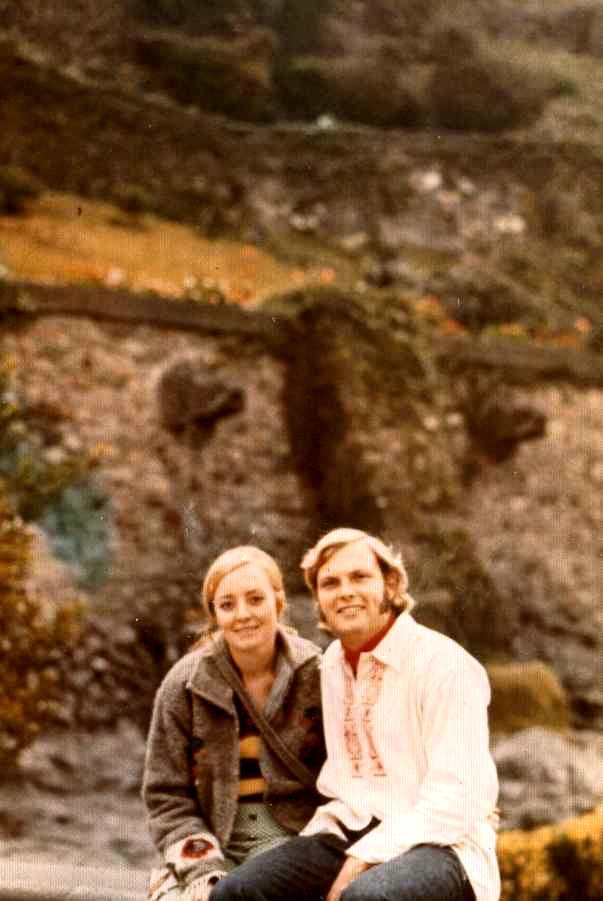
We continued our journey north to Mexico City, which was a mega-city even then, but after seven hours of traipsing through the anthropological museum, Ligia refocused our itinerary with, “Mi Amor (my love), we need to get back to the hotel early today if we hope to make the symphony orchestra this evening.”
We spent a peaceful afternoon together on the terrace of the Chapultepec Castle, a sacred place of the Aztecs and the only “royal” castle in the Americas with an incredible view of the park and the city. The question of how many children we should have came up, and I opted for one, while Ligia leaned towards four or five. (Our parents both had three children, which might work). We didn’t agree on a number at that point but did agree on having kids.
Gliding on one of the colorful, flat gondola-like boats on the ancient canals of Xochimilco was when I realized what a lucky guy I was to have found this strawberry-blond Guatemalan girl with green eyes. We spent the afternoon listening to local music and eating tamales and tortillas with a variety of tasty fillings and just whispering sweet nothings…
On the last leg of our trip, we headed north, toward Saltillo, Monterrey, and eventually Torreón, over a vast hot desert. We departed first thing in the morning—we couldn’t sleep due to the extreme heat. We were close enough to Texas to listen to English programs and Tex-Mex music on the radio, which Ligia detests. This provided a good opportunity to chat about the pluses and minuses of living in the U.S. Ligia’s biggest question was, “You mean we can’t have any ‘muchachas’ to cook and help out?” “Si mi amorcita,” I responded, they’re too expensive in the States. That was a big negative for returning to my homeland right away.
We drove through the vast desert to the north until we reached Torreon and spent the night in the car next to the road, which motivated us to get up early the next morning to head south, through the beautiful town of Guadalajara, then Morelia, then south again through Oaxaca. As the little yellow VW Bug glided through the pines in the hills of Oaxaca, we saw a large truck coming right towards us as he passed another truck, forcing us off the road, at which point I saw the sign on the door of one of the trucks “Cuidado, Dinamita A Bordo!” (Be Careful, Dynamite on Board). I let out a few descriptive expletives and Ligia a scream of terror, but, under the circumstances, they definitely had the right of way, which was why I wisely let them careen by. By then, we were close to the Guatemalan border, and after a relatively quick security check, we were on the last leg of our journey to Guatemala City to start our new life together.
Europe On A Very Few Dollars A Day
After a fast track through the Master’s program at the Institute of Latin American Studies at the University of Texas in Austin, we packed our bags and headed back to Guatemala where we dropped off our daughter, Michelle, with Ligia’s parents and headed out to Europe for a four-month trek. We’d cover ten countries using public transportation, only flying from Portugal to England when our funds were depleted.
We flew to Luxembourg where we boarded a train for Belgium. Much to my surprise, the train cost $2 a kilometer apiece! Our $2,000 would soon run out at this rate, so I determined that we should begin hitchhiking. When I informed Ligia of my decision, she just looked at me incredulously and said, “En serio?” (Are you serious?) I remember getting picked up outside of Dusseldorf and we were taken to Trier, Germany. We had no luck hitchhiking through Switzerland, but made a long haul with a truck driver, who picked us up in North Italy and was willing to take us all the way to Naples. My Portuguese actually came in handy with the Italian truck driver, who let us off in Milan. At that point, it was clear that our major mode of transportation was definitely walking. The soles of my heavy-duty, leather hiking boots were totally worn down by the time we finished our visit, but that’s why Theroux recommends “walking” to get to know your surroundings. The Youth Hostel system provided excellent, clean facilities with lots of people to meet and learn about interesting places to explore.
We left Italy on the train and passed by the scenic “French Riviera,” with its spectacular views of the Mediterranean, but it was out of our price range, so we headed on to Barcelona, Spain. When we arrived in Barcelona, a businessman with whom we had chatted during the trip invited us to a local bar for some local snacks or “tapas.” This included all kinds of seafood like squid, “Jamon Serrano” (thinly sliced meat from a pork leg, which hangs above the bar) as well as potato salad, lots of sausage and some wine. After more than an hour, the Spaniard said he needed to catch a train and that it was almost noon, so we’d probably want to get some lunch! Ligia and I looked at one another in astonishment, “lunch?!”
After a few days in Barcelona, we hopped on a train for Madrid, the capital city. We spent a number of days with Ligia’s closest Guatemalan friend, Ester, and her family. We arrived at their home late one evening and were exhausted. And after some initial conversations and hugs (Ligia and Ester hadn’t seen one another for over 12 years), I was ready to suggest we clean-up for bed when Ester marched out with a major “torta de papa,” or potato omelet, for dinner! It was monstrous. Just another reminder that the Spaniards loved to eat and that they are on a different schedule.
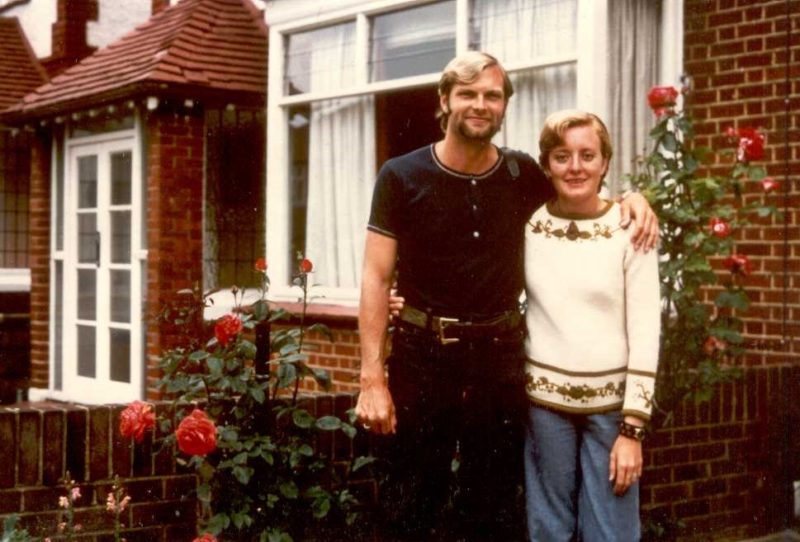 After a short week, we took a train to Lisbon, and after another week, took a flight into London, which proved to be a fascinating place – but expensive. So we took a train up to my family’s genetic stomping grounds, Scotland. We spent a few days with my mother’s second cousin, Agnes, and her husband William. We were in a deep sleep the first morning when Agnes yells up the stairs, “the sun’s a crackin’ through the trees!” which meant we needed to roll out of bed because breakfast was waiting below. Scotland proved to be an ideal destination, as everyone was friendly, and it was cheap. We traveled up to the highlands capital of Inverness and were hitchhiking south by the Caledonian Canal when a newspaper truck picked us up. After some small talk, the truck driver began reciting a poem he’d made up that morning. Ligia and I were astonished that even the deliveryman is a poet in this country!
After a short week, we took a train to Lisbon, and after another week, took a flight into London, which proved to be a fascinating place – but expensive. So we took a train up to my family’s genetic stomping grounds, Scotland. We spent a few days with my mother’s second cousin, Agnes, and her husband William. We were in a deep sleep the first morning when Agnes yells up the stairs, “the sun’s a crackin’ through the trees!” which meant we needed to roll out of bed because breakfast was waiting below. Scotland proved to be an ideal destination, as everyone was friendly, and it was cheap. We traveled up to the highlands capital of Inverness and were hitchhiking south by the Caledonian Canal when a newspaper truck picked us up. After some small talk, the truck driver began reciting a poem he’d made up that morning. Ligia and I were astonished that even the deliveryman is a poet in this country!
We kept going south to the renowned “Lake District” of England. Unfortunately, it was hot and the area was packed with cars, as it was vacation season. I didn’t realize that all the hotels and hostels were also packed, so there we were, on a roundabout, nobody to pick us up and there was no way we could venture into the Lake District itself anyway. With that, Ligia totally lost her patience, “Bruto!” she yelled, and threw her wedding ring onto the ground. Fortunately, it took us over an hour to find it, so she calmed down and allowed me to come up with a new plan of action. Once we finally found the ring, I apologized (groveled)…….
Mi Amor, I don’t know what I was thinking! I should have known that the place would be packed with vacationers and you couldn’t just turn up and expect to find a place to stay! First off, let’s get off this roundabout since everyone is staring at us. I’ll find a bus and we’ll head on down to the British friends I met in Bolivia years ago, Michael and Sarah. They live on the south coast where it will be cooler. How does that sound?
Okay, she responded, but NO more hitchhiking. Period.
In a moment of transparency, based on what I know today, I might have shared a list of reasons she might want to reconsider traveling around the world with me in the first place. Here’s my “she’d reconsider” or what I call my Yang Travel list:
- He’ll continue to travel as if he’s alone.
- He’ll say you can pack whatever you want as long as it will fit into a relatively small backpack.
- He’ll avoid trip planning, preferring to “go with the flow” to determine what to visit next.
- His idea of fun will be endless hours in any museum open to the public.
- He’ll never suggest a “night out” because he’ll want to get up at the break of dawn to start exploring the next day.
- He’ll never have enough money to actually consider “splurging.”
- He’ll insist on meeting and befriending some very seamy looking characters.
Fortunately, I kept my mouth shut, and we spent several days with my friends in Bognor Regis, and after four months on the road, Ligia and I were ready to head back to Guatemala, her family and our daughter, Michelle. But before we left I had an epiphany that I needed to change my philosophy on travel to include more friends and personal interaction, dial in all the plans in order to avoid too many surprises and vastly increase the quality level of the facilities and cuisine. So I began researching “river tours.”
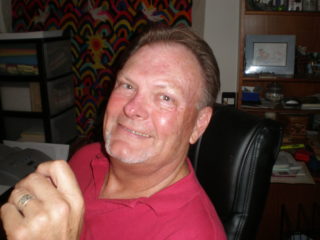
Mark D. Walker was a Peace Corps Volunteer in Guatemala and spent over forty years helping disadvantaged people in the developing world. He came to Phoenix as a Senior Director for Food for the Hungry, worked with other groups like Make a Wish International and was the CEO of Hagar USA, a Christian-based organization that supports survivors of human trafficking.
His book, Different Latitudes: My Life in the Peace Corps and Beyond was recognized by the Arizona Literary Association for Non-Fiction and according to the Midwest Review, “…is more than just another travel memoir. It is an engaged and engaging story of one man’s physical and spiritual journey of self-discovery…”
His articles have been published in Ragazine, Literary Yard, WorldView and Revue Magazines while another appeared in “Crossing Class: The Invisible Wall” anthology published by “Wising Up Press.
His honors include the “Service Above Self” award from Rotary International. His wife and three children were born in Guatemala. You can learn more at www.MillionMileWalker.com and follow him on Facebook at https://www.facebook.com/millionmilewalker/

